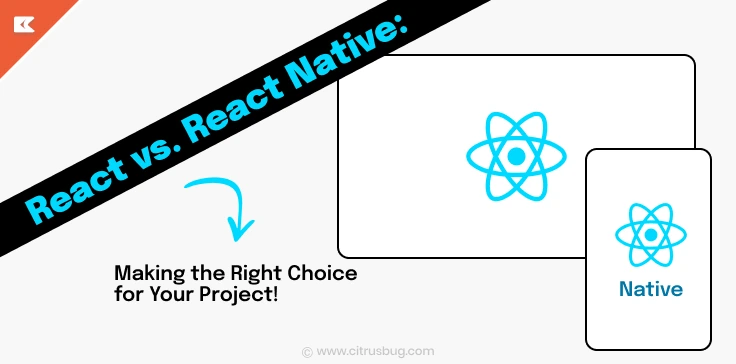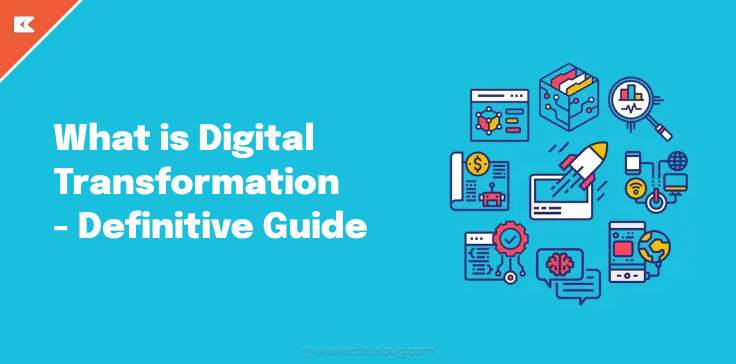10 Best Web Development Frameworks in 2022 (Frontend & Backend)
- March 2, 2022
-
16539 Views
- by Ishan Vyas

Having a website for your business in this digital age has become a must. It opens up the possibility for your enterprise to reach a wider audience base and attract business leads more effectively. Unlike a few years ago, the extensive demand for web application development has led to the inception of several functional frameworks. These frameworks are purposely designed considering the modern business challenges and offer a simple yet effective way to design your web apps.
This blog is dedicated to ten such productive frameworks for frontend and backend that are highly prevalent and are known to deliver the best results. In addition, we will provide you with a reliable source to hire front end developers and backend developers for your project. So, let us begin!
How have Web Development Frameworks Eased the App Development Process?
With the development of numerous frameworks based on different programming languages, the software development process for creating web applications has become significantly easier. That is one of the reasons for the high demand to hire backend developers and front-end developers.
Let us glance at some reasons how web frameworks have eased the way to create new web apps down below:
Higher Performance
Web frameworks are specifically designed with pre-built features and functionalities to deliver extremely high efficiency and performance while building apps. The loading capacity of the websites designed with appropriate framework enhances significantly.
Reduction in Errors
Most of the framework methodologies incorporate the finest software engineering practices. Numerous web frameworks have a pre-built or externally integrated testing mechanism that tests the code there and then, reducing the number of errors in the final code.
Faster Development
Most web frameworks come with pre-written templates and objects that could be leveraged to complete redundant programming tasks. These tools save the time of developers and let them focus on the core programming part producing swift and more productive outcomes.
Better Reliability and Security
Frameworks include hundreds of ready-made components created and regularly updated by a community of developers. This enormous backing by the programming community ensures your project won’t get stuck in between, and the best possible solution for the business challenges can be developed.
What are the Types of Web Development Frameworks?
In general, every web application includes a front end or a client-side part and a backend or a server-side part. Therefore, there are two kinds of web frameworks available for both frontend and backend.
1. Front End Web Development Framework
These frameworks are used to design the front end or the user interface of a web application. The front-end frameworks are mostly based on Web development languages such as JavaScript, HTML, and CSS.
The responsibility of the front end framework is to develop the UX/UI design and deal with other crucial aspects of the application such as SEO optimization, code snippets, Admin templates, user interaction management, and more.
Want to Develop the Front End of Your Application?
2. Backend Web Development Framework
If you’re a beginner and find coding overwhelming, Shopify offers a great solution with its trial. Shopify for 1 dollar allows you to easily build an online store or website without needing to write extensive code.
These frameworks are used to design the backend or the hidden part of the app that is responsible for the functioning of the web application. Backend frameworks are based on the programming languages such as Python, .NET, Ruby, Java, and PHP.
They work by dealing with the server and database functioning, routing protocols, solution logic and architecture, authorization options, data security, and more.
Want to Create a Robust Backend for Your Application?
Here is a difference table for Front end Vs. Backend Web Development Frameworks:
|
Front End Frameworks |
Backend Frameworks |
|
The front end is the part of the web app that interacts with the end-user. |
The backend of an app refers to the background functioning of the web application. |
|
It offers pre-written code snippets, integrable elements, reusable templates, and manage user interactions. |
It offers features such as user authorization, privacy encryptions, database manipulation, reusable components for connecting the front end to the backend. |
|
The key features include reusable templates, UI/UX designing, SEO optimization, and enhancing the performance and scalability of the app. |
The key features include server handling, designing site architecture, database management, security, and URL routing. |
|
HTML, CSS, JavaScript, JQuery, etc., are a few prevalent front-end languages. |
Python, JavaScript, PHP, Ruby, .NET, etc., are a few prominent backend languages. |
|
React, Vue, Ember, Bootstrap, and Angular are the most famous front-end frameworks. |
Django, Ruby On Rails, Spring, Express, ASP.NET Core are the most famous backend frameworks. |
10 Best Web Development Frameworks to Consider in 2024
Below given is the list of best web development frameworks that could be leveraged for app development in 2024:
1. Angular (Frontend)
Angular is one of the most prominent front-end frameworks leveraged by a huge number of web application development companies. Angular was first introduced in 2009 where it used JavaScript as its programming language. It was later transformed in 2016 and now uses Typescript instead of JavaScript. Angular is known to develop client-side dynamic web pages.
Angular is a large and all-inclusive framework that contains controllers, libraries, directives, and other components which makes it harder to learn as compared to other frameworks. Angular is based on MVC architecture (Model-View-Controller) and can be used to create high-performing single-page applications.
Advantages
1. Availability of countless Angularjs development services.
2. It supports the MVC architecture.
3. Two-way data binding is present.
4. It speeds up the application development process.
Disadvantages
1. Slower processing.
2. Steep learning curve.
3. The documentation part is not well-organized.
2. Vue.Js (Frontend)
Vue is a highly popular web framework used to build single-page apps and user interfaces for web apps. The framework is based on MVVM architecture (Model-View-ViewModel). It is lightweight and has numerous tools and features to create functional user interfaces. Vue is easy to use and learn and can be easily integrated with 3rd party tools and solutions.
Advantages
1. It is lightweight.
2. It has an easy learning curve.
3. The framework aids in swift development.
4. Easy to integrate with third-party apps.
Disadvantages
1. It is not supported by the top IT enterprises such as Google, Microsoft, etc.
2. The available tools are not very stable.
3. React (Frontend)
React is basically a JS library introduced by Facebook (now Meta). React works as a web framework and is mostly used to develop single-page front-end applications. Apart from it, it supports development for mobile applications which is usually not supported by the majority of other frameworks.
React effortlessly integrates with multiple other libraries for successfully conducting operations of routing, state management, and interaction with API.
To get your project made in React, hire Reactjs developers from here!
Advantages
1. It consists of a virtual DOM that offers fast manipulation in the documents.
2. Easy to integrate with other libraries.
3. It supports mobile application development.
Disadvantages
1. It has a complicated structure.
2. The documentation part is not well organized.
4. jQuery (Frontend)
jQuery is an open-source JavaScript library used for building app user interfaces. jQuery is known for its simplistic approach and cross-browser compatibility. The framework provides easy interaction between the elements of DOM and its syntax structure.
The framework is prominent due to its ability to create exceptional effects and animations in the developed apps. jQuery is small in size and has multiple plugins to easily add functionalities into its structure.
Advantages
1. It is extremely easy to use.
2. It has support for extensive libraries.
3. It is backed by a strong open-source community.
4. jQuery offers easy documentation.
Disadvantages
1. jQuery javascript file is required to make the app function.
2. Limited functionalities are included in the framework.
5. Ember (Frontend)
Ember has earned the reputation of being the best Javascript framework many times. Ember offers various out-of-the-box features that can be used to develop highly functional applications. Ember is used by various tech giants such as Google, Microsoft, and Netflix.
Ember is based on the MVMM architecture and is simple to use. It eliminates the need for redundant tasks and adopts some of the best JS practices in its core design to develop web apps.
Advantages
1. It delivers high performance.
2. The documentation is extensive and well-maintained.
3. It supports code debugging.
Disadvantages
1. The framework has a steep learning curve.
2. It is not suitable for smaller projects.
6. Django (Backend+Frontend)
Django is a prominent Python framework that has an extremely high demand among developers and businesses. As a leading Django development company, we utilize Django’s concept of code reusability and its MVT (Model-View-Template) Architecture to develop applications rapidly. Django’s efficiency makes it one of the finest options for both front-end and back-end development. If you seek professional Django development services, this framework is well-suited for creating complex and large business projects.
The biggest corporations such as Instagram, Disqus, and NASA use Django to handle their backend operations. Some of the key features of Django are messaging in-built validation, and authentication. This framework is suitable for designing complex and large business projects.
Advantages
1. Faster development.
2. Availability of inbuilt authentication tool.
3. Huge community support.
4. Well-organized documentation.
5. It can create secure and robust applications.
Disadvantages
1. Steep learning curve.
2. Slow processing.
3. Hire Python programmer that excels in developing scalable and profitable apps.
7. Ruby on Rails (Backend)
It is one of the oldest web development frameworks for building the backend of applications. It is based on the Ruby programming language and has developed over 800,000 websites until now. The framework supports usage of complex algorithms to design functional logic for complicated business problems.
It includes powerful libraries and tools and can be used to create cloud-based applications. Apps such as Airbnb, Hulu, GitHub, and Groupon are made using this framework.
Advantages
1. Speedy development.
2. Automation-enabled.
3. Enormous libraries and tools.
Disadvantages
1. Slow processing.
2. Improper documentation.
8. Laravel (Backend)
Laravel is a PHP-based framework that fundamentally works on the concept and paradigms of PHP scripting language. Laravel works on the MVC (Model-View-Controller) architecture.
It comes with API support and has numerous packages that make the framework adaptable and extensible. The framework is mostly used to design the backend of web apps. You can hire backend developers proficient in Laravel for small to mid-range web solutions.
Advantages
1. Good documentation.
2. Cache backends.
3. Integrated mail services.
4. Availability of the newest features of PHP.
Disadvantages
1. No support for payment gateways.
2. Not suitable for developing mobile apps.
9. Express.JS (Backend)
Express is a Node.js API that is extremely powerful and can create highly productive web applications. It is mostly used by large enterprises due to its higher flexibility.
It has several in-built features and functionalities such as third-party integrations, routing, templating, server-side scripting, etc. that make it suitable to design functional apps. In addition, it has a minimalist feel and is easy to operate if you know the intricacies of the language.
Advantages
1. Highly flexible.
2. Feature-packed.
3. Great for API development.
Disadvantages
1. Monotonous callbacks.
2. High learning curve.
10. Flask (Backend)
Flask is a Python-based web framework known for its ability to build robust, lightweight, and high-performing applications. As a Python development company, we leverage Flask’s minimalistic approach to craft scalable applications tailored to your needs. Flask also provides a solid foundation with its built-in web server and debugger, making it an excellent choice for developing functional and efficient applications.
The key features of Flask include a built-in web server and debugger, RESTful request dispatching, unit testing support, WSGI compliance, and Unicode support. You can hire Python programmer proficient in Flask to achieve the best outcomes for your project idea.
Advantages
1. It is highly flexible.
2. It is scalable.
3. Flask is lightweight.
4. Good documentation.
Disadvantages
1. Higher maintenance.
2. Availability of limited tools.
3. Difficult to use for complex applications.
Wrapping Up
Web frameworks are extremely crucial elements in the software development process. Each of them has its unique set of capabilities and limitations. Depending upon the project requirement, each one of them will provide you with the best outcome for your project. If you are confused about which one to choose for your project, you may get guidance from Citrusbug, one of the leading web application development companies, that has extensive experience in developing the best web apps for all sorts of market verticals.





 SaaS Development
SaaS Development Web Application Development
Web Application Development Mobile Application Development
Mobile Application Development Custom Software Development
Custom Software Development Cloud Development
Cloud Development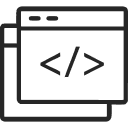 DevOps Development
DevOps Development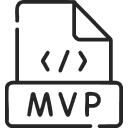 MVP Development
MVP Development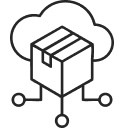 Digital Product Development
Digital Product Development Hire Chatbot Developers
Hire Chatbot Developers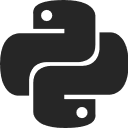 Hire Python Developers
Hire Python Developers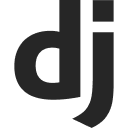 Hire Django Developers
Hire Django Developers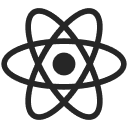 Hire ReactJS Developers
Hire ReactJS Developers Hire AngularJS Developers
Hire AngularJS Developers Hire VueJS Developers
Hire VueJS Developers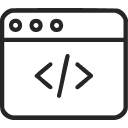 Hire Full Stack Developers
Hire Full Stack Developers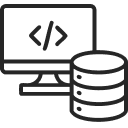 Hire Back End Developers
Hire Back End Developers Hire Front End Developers
Hire Front End Developers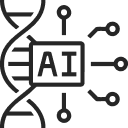 AI Healthcare Software Development & Consulting
AI Healthcare Software Development & Consulting Healthcare App Development
Healthcare App Development EHR Software Development
EHR Software Development Healthcare AI Chatbot Development
Healthcare AI Chatbot Development Telemedicine App Development Company
Telemedicine App Development Company Medical Billing Software Development
Medical Billing Software Development Fitness App Development
Fitness App Development RPM Software Development
RPM Software Development Medicine Delivery App Development
Medicine Delivery App Development Medical Device Software Development
Medical Device Software Development Patient Engagement Software Solutions
Patient Engagement Software Solutions Mental Health App Development
Mental Health App Development Healthcare IT Consulting
Healthcare IT Consulting Healthcare CRM Software Development
Healthcare CRM Software Development Healthcare IT Managed Services
Healthcare IT Managed Services Healthcare Software Testing services
Healthcare Software Testing services Medical Practice Management Software
Medical Practice Management Software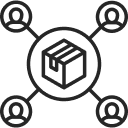 Outsourcing Healthcare IT Services
Outsourcing Healthcare IT Services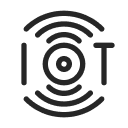 IoT Solutions for Healthcare
IoT Solutions for Healthcare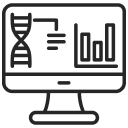 Medical Image Analysis Software Development Services
Medical Image Analysis Software Development Services Lending Software Development Services
Lending Software Development Services Payment Gateway Software Development
Payment Gateway Software Development Accounting Software Development
Accounting Software Development AI-Driven Banking App Development
AI-Driven Banking App Development Insurance Software Development
Insurance Software Development Finance Software Development
Finance Software Development Loan Management Software Development
Loan Management Software Development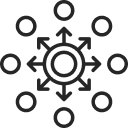 Decentralized Finance Development Services
Decentralized Finance Development Services eWallet App Development
eWallet App Development Payment App Development
Payment App Development Money Transfer App Development
Money Transfer App Development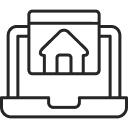 Mortgage Software Development
Mortgage Software Development Insurance Fraud Detection Software Development
Insurance Fraud Detection Software Development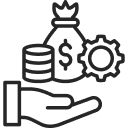 Wealth Management Software Development
Wealth Management Software Development Cryptocurrency Exchange Platform Development
Cryptocurrency Exchange Platform Development Neobank App Development
Neobank App Development Stock Trading App Development
Stock Trading App Development AML software Development
AML software Development Web3 Wallet Development
Web3 Wallet Development Robo-Advisor App Development
Robo-Advisor App Development Supply Chain Management Software Development
Supply Chain Management Software Development Fleet Management Software Development
Fleet Management Software Development Warehouse Management Software Development
Warehouse Management Software Development LMS Development
LMS Development Education App Development
Education App Development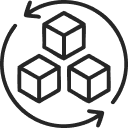 Inventory Management Software Development
Inventory Management Software Development Property Management Software Development
Property Management Software Development Real Estate CRM Software Development
Real Estate CRM Software Development Real Estate Document Management Software
Real Estate Document Management Software Construction App Development
Construction App Development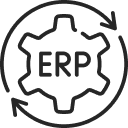 Construction ERP Software Development
Construction ERP Software Development






